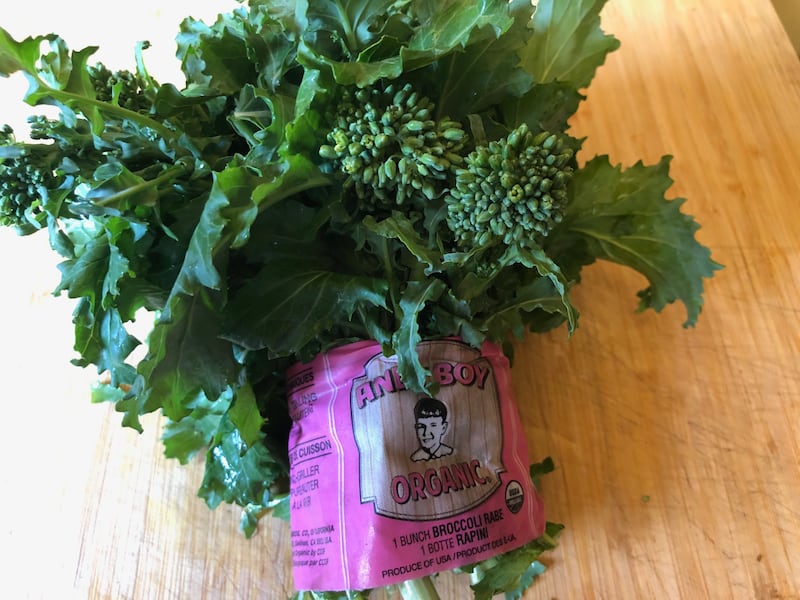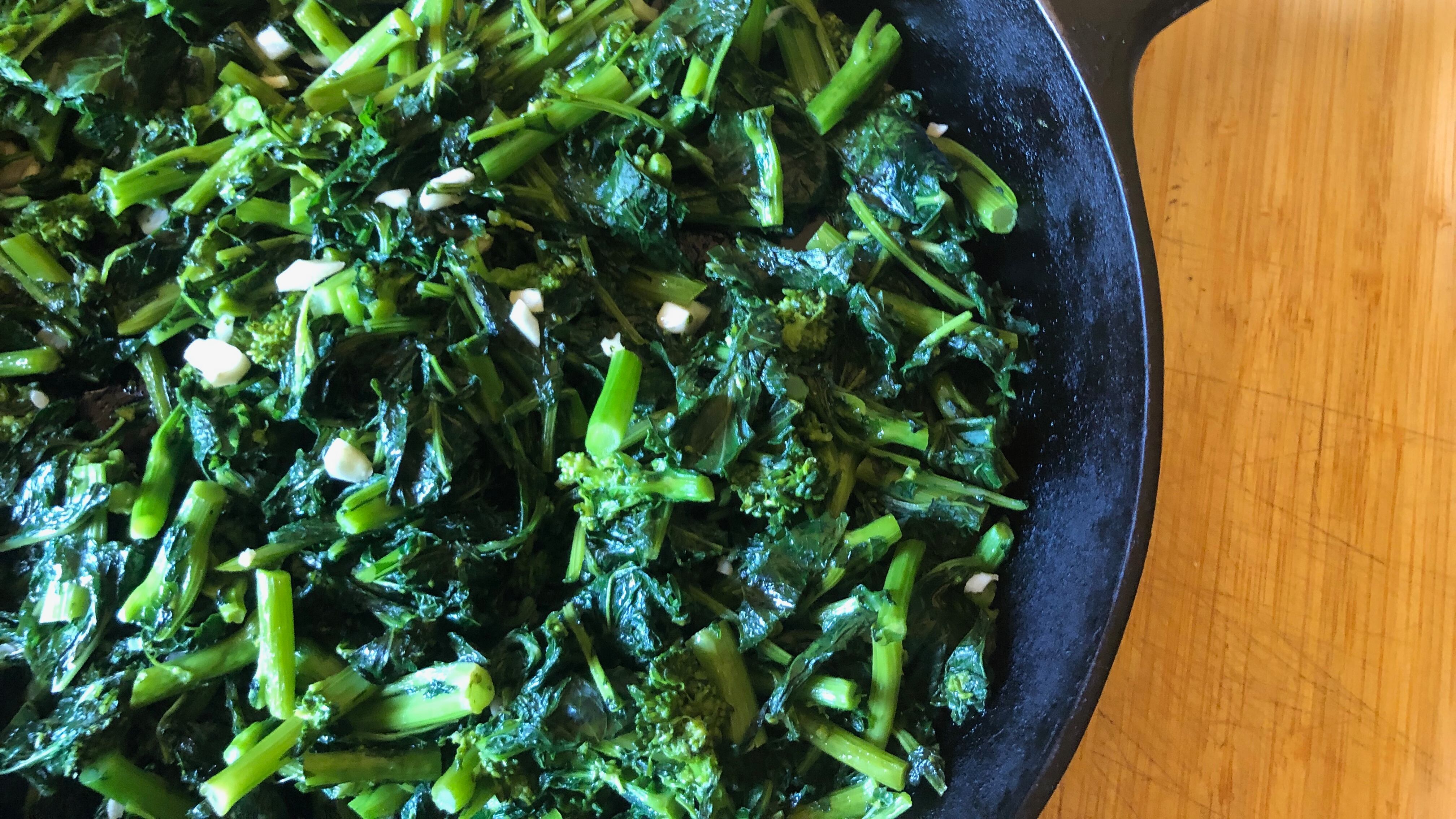Jim Dixon wrote about food for WW for more than 20 years, but these days most of his time is spent at his olive oil-focused specialty food business Wellspent Market. Jim’s always loved to eat, and he encourages his customers to cook by sending them recipes every week through his newsletter. We’re happy to have him back creating some special dishes just for WW readers.
I used to get cranky seeing the term “raab” used to describe the immature flower stalks of vegetables like Brussels sprouts or collard greens. Those flowering heads, aka inflorescence, look just like broccoli rabe (the preferred spelling), and it does seem logical to apply the name to the inflorescence of other members of the Brassica family.
But rabe derives from rapa, Italian for turnip, while broccoli is the plural of the Italian broccolo, which means the flowering head of a cabbage. So broccoli rabe literally means turnip flowers, and I was known for my farmers market rants about reserving the term for specimens in the Brassica rapa family, aka turnips.
But I was mostly ignored, and rightly so. The farmers selling those early cabbage-family flowers have been up for hours by the time customers line up, and they don’t really have the time to explain the Latin roots of “collard broccoli.”
Anyway, the best “raab” is the original. Broccoli rabe, also known as rapini or, in Italy, cima de rapa or head of the turnip, is known for that tasty inflorescence. A couple of Italian immigrants bred modern rapini from Sicilian wild mustards, and today the D’Arrigo brothers’ California farms produce most of America’s supply. The deep green bunches marked with a bright pink Andy Boy label are available in the produce section at most grocery stores.

Their sharp, slightly bitter flavor comes from sulfur-containing phytochemicals called glucosinolates, also responsible for the tang of mustard greens. But heat, salt and fat tone it down and make rapini particularly tasty.
Rapini
1 bunch broccoli rabe, aka rapini
1 tablespoon salt
3 tablespoons extra-virgin olive oil
3-6 cloves garlic, chopped
Use a pot large enough to hold the entire bunch of rapini, 4-5 quarts. Fill it about 3/4 full of water, bring to a boil, add salt, and drop in rapini with the flowers up. Use tongs to gently push the rapini under the water, let the water come back to a boil, and cook for a minute or two. Use the tongs to lift the rapini out of the water, holding it over the pot for a few seconds to drain off any excess. Transfer to a bowl and let it cool enough for handling.
Cut the cooled rapini into pieces about 2 inches long. Heat a skillet over medium, add olive oil, rapini, and garlic, and cook, stirring occasionally, for about 10 minutes. I usually eat this as a vegetable side, but it’s also very good tossed with a shaped pasta like rigatoni and spiked with red chili flakes.

